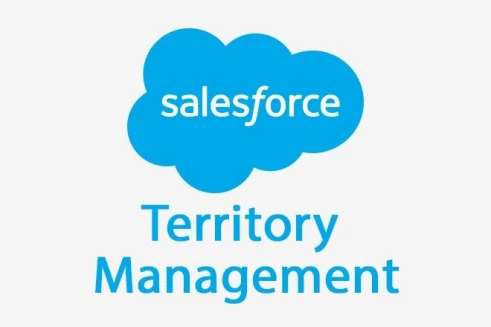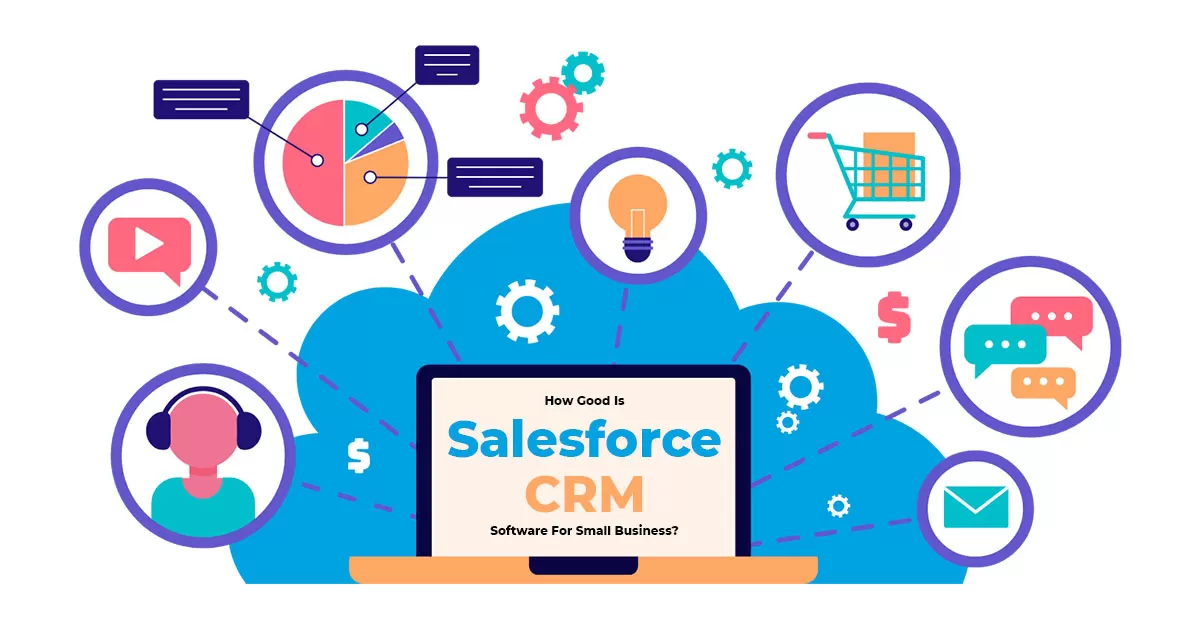Introduction to Salesforce CRM Territory Management
Understanding Territory Management in Salesforce CRM
Imagine your sales team as explorers navigating a vast, untamed landscape. Leads and opportunities are hidden treasures, scattered across the terrain. Without a map or compass, valuable prospects might be missed, and productivity remains lost in the wilderness. This is where territory management emerges as your cartographer, transforming your Salesforce CRM from a blank map into a strategic roadmap for sales success.
Territory management in Salesforce CRM defines and organizes your sales landscape by dividing it into clearly defined territories. Think of them as districts, each assigned to a specific sales representative or team. This focused approach brings order to the chaos, offering several key benefits:
- Increased Efficiency: No more wandering aimlessly. Territories provide clear boundaries, allowing reps to focus their efforts on a manageable area, reducing wasted time and effort.
- Improved Coverage: Every corner of the map gets explored. Territory management ensures all leads and accounts receive the attention they deserve, maximizing your sales footprint and minimizing missed opportunities.
- Enhanced Accountability: Ownership and responsibility become crystal clear. With defined territories, reps are accountable for their performance within their assigned area, fostering a culture of ownership and driving results.
- Data-Driven Insights: Territory management unlocks a treasure trove of data. By tracking performance metrics per territory, you can identify trends, analyze strengths and weaknesses, and make informed decisions to optimize your sales strategy.
Benefits of Implementing Territory Management
The advantages of using Salesforce CRM’s territory management features extend far beyond organization and accountability. Here are some key benefits that translate into tangible results:
- Increased Sales Revenue: By ensuring efficient coverage and focused efforts, territory management helps your sales team close more deals and boost overall revenue.
- Improved Sales Team Morale: Clear boundaries and defined goals lead to a sense of purpose and direction for reps. This can translate into increased motivation and engagement, driving better performance.
- Enhanced Customer Satisfaction: With dedicated representatives assigned to specific territories, customers receive personalized attention and consistent support, leading to higher satisfaction and loyalty.
- Data-Driven Decision Making: Territory management provides valuable data insights that empower you to make informed decisions about resource allocation, territory adjustments, and sales strategy optimization.
Role of Territory Management in Sales Optimization
Effective territory management is not just about drawing lines on a map; it’s about optimizing your entire sales engine. Here’s how it contributes to sales growth:
- Streamlined Workflows: Automate repetitive tasks like lead assignment and reporting, freeing up your team’s time for high-impact activities like building relationships and closing deals.
- Data-Driven Territory Design: Analyze historical data and sales trends to define territories that are strategically balanced and ensure optimal coverage for your target audience.
- Enhanced Forecasting Accuracy: Track performance within each territory to gain deeper insights into sales pipelines and predict future outcomes with greater accuracy, allowing for better resource allocation and budget planning.
- Continuous Improvement: The ability to track and analyze data across territories allows you to identify areas for improvement, refine your sales strategy, and continuously optimize your approach for maximum impact.
By implementing and leveraging the power of territory management in Salesforce CRM, you can transform your sales team from a scattered army into a well-oiled machine, navigating the landscape of opportunity with purpose, efficiency, and data-driven insights. In the following sections, we’ll delve deeper into the practical aspects of setting up and optimizing your territory management system, equipping you with the tools and knowledge to unlock the full potential of your Salesforce CRM.
Setting Up Territories in Salesforce CRM: Building Your Sales Map
Now that you’ve grasped the power of territory management, let’s embark on the practical journey of building your sales map in Salesforce CRM. This section will guide you through the key steps of setting up territories, from defining criteria to utilizing automation for seamless assignment.
Defining Territory Criteria: Charting Your Course
Before drawing your sales boundaries, it’s crucial to identify the compass points that will guide your territory design. Here are some key criteria to consider:
- Sales Potential: Analyze your target market and sales data to identify areas with high potential for revenue generation. This can be based on factors like customer density, industry concentration, or historical sales performance.
- Workload Distribution: Ensure each territory is manageable and workload is evenly distributed among your sales team. Consider factors like account volume, complexity of deals, and individual rep capacity.
- Geographical Considerations: Leverage geographical data to define natural boundaries based on proximity, travel time, or regional differences. This can improve efficiency and customer service delivery.
- Market Segmentation: Tailor your territories to specific market segments or product lines. This allows for deeper customer understanding and more targeted sales strategies.
- Team Composition and Skills: Consider the strengths and expertise of your sales team when designing territories. Matching territories to individual skills can optimize performance and drive better results.
Utilizing Geographical Data for Territories: Mapping Your Landscape
Geography plays a crucial role in effective territory management. Salesforce CRM integrates seamlessly with various mapping tools, allowing you to:
- Visualize Territories: Overlay your defined territories on a map to gain a clear visual representation of your sales footprint. This can help identify overlaps, gaps, and potential areas for adjustment.
- Optimize Territory Design: Utilize geographical data like distance and travel time to ensure territories are geographically balanced and minimize travel costs for your sales team.
- Location-Based Insights: Analyze data by territory based on geographical location. This can reveal trends, identify underserved areas, and inform targeted marketing campaigns.
- Improved Customer Service: Assign territories based on proximity to customers, enhancing responsiveness and building stronger relationships.
Automating Territory Assignment: Streamlining Your Sales Engine
Say goodbye to manual territory assignment and embrace the power of automation. Salesforce CRM offers various tools to streamline this process:
- Assignment Rules: Define rules based on criteria like account location, industry, or lead source to automatically assign leads and opportunities to the appropriate territory. This saves time, reduces errors, and ensures consistency.
- Territory Hierarchy: Create a multi-layered structure where territories can be nested within larger regions or states. This allows for flexibility in managing different levels of sales coverage and reporting.
- Mass Territory Updates: Easily update territory assignments for multiple records at once, significantly reducing manual workload and ensuring data integrity.
- Data Integration: Integrate your CRM with external data sources like demographic data or customer location data to automate territory assignment based on real-time insights.
By utilizing these automation features, you can ensure your territory assignments are always accurate, efficient, and aligned with your evolving sales strategy. Remember, your sales map is not static; regularly review and refine your territories based on data, performance metrics, and changes in your market landscape.
Optimizing Salesforce CRM for Dynamic Territories: Embarking on a Flexible Sales Journey
The sales landscape is ever-evolvable, constantly shifting with market trends, team growth, and changing priorities. To thrive in this dynamic environment, your Salesforce CRM territory management system needs to be adaptable and flexible, constantly adapting to your evolving needs. This section delves into the strategies and features that empower you to keep your sales map dynamic and ready to navigate any changes.
Adapting to Changes in Sales Structures: Emboldening Your Sales Compass
As your business grows or evolves, your sales team structure might need to adjust. Territory management in Salesforce CRM isn’t static; it’s a living system that can adapt alongside your needs. Here are some strategies for adjusting territories:
- Merging and Splitting Territories: If market conditions or sales volume shift significantly, you might need to merge smaller territories or split larger ones to ensure optimal coverage and efficiency.
- Redistribution Based on Performance: Analyze data to identify territories underperforming or exceeding expectations. Redistribute accounts or leads to ensure a balanced distribution of workloads and maximize sales potential.
- Accommodating Team Growth: As your sales team grows, you might need to create new territories or adjust existing ones to accommodate new members.
- Shifting Focus based on Market Trends: If market trends highlight new opportunities in previously under-represented areas, consider adjusting territories to prioritize these emerging markets.
Flexibility in Territory Hierarchy: A Multi-Layered Map for Diverse Teams
Sales team structures can be diverse, with different levels of specialization and team organization. A flexible territory hierarchy in Salesforce CRM allows you to adapt your system to these complexities:
- Multi-Level Structures: Create nested territories, such as regions within states or teams within territories. This enables focused management at different levels, providing granular insights and control.
- Team-Based Territories: Assign territories to teams instead of individual reps, allowing for collaborative sales efforts and knowledge sharing.
- Dynamic Reporting: Generate reports based on different levels of the hierarchy, offering insights into overall performance, individual team contributions, and performance across regions.
- Scalability: As your business grows, the hierarchy can expand to accommodate new teams, territories, and levels of complexity.
Real-time Updates and Notifications: Keeping Your Sales Map Current
In today’s fast-moving business world, staying informed about changes is crucial. Salesforce CRM offers features that ensure your territory management system remains dynamic and up-to-date:
- Trigger-Based Automation: Set up automated notifications for territory changes, new account assignments, or performance updates, keeping your team informed and ready to adapt.
- Real-time Data Visualization: Utilize interactive reports and data visualizations to monitor territory performance, identify trends, and react quickly to changes in real-time.
- Mobile Access: Access territory information and updates on the go through your mobile device, ensuring you stay informed and connected even when away from your desk.
- Integration with External Systems: Integrate your CRM with other systems like marketing automation tools or customer data platforms to ensure territory information is always accurate and aligned across different platforms.
By implementing these strategies and features, you can transform your territory management system into a dynamic tool that empowers your sales team to navigate the ever-changing landscape with agility and confidence. Remember, your sales map is a living document, constantly evolving alongside your business. Embrace the flexibility and adaptability of Salesforce CRM to ensure your territory management system remains a powerful tool for driving sales success.
Effective Collaboration with Territory Management: Building a Cohesive Sales Force
While territory management structures your sales landscape, it doesn’t have to create silos. In fact, it can be a powerful catalyst for collaboration, fostering teamwork, knowledge sharing, and ultimately, driving better sales outcomes. This section delves into strategies and features in Salesforce CRM that empower you to build a cohesive sales force within your defined territories.
Facilitating Team Collaboration in Territories: Breaking Down Barriers, Building Bridges
Effective territory management isn’t just about individual performance; it’s about leveraging the collective power of your team. Here are some ways to utilize Salesforce CRM to enhance collaboration within territories:
- Shared Territory Dashboards: Create dashboards that provide a unified view of key performance metrics across all team members within a territory. This transparency fosters accountability and encourages collective goal setting.
- Territory Chat Groups: Utilize built-in chat features or integrate external collaboration tools to enable real-time communication and knowledge sharing between team members within a territory.
- Joint Opportunity Management: Encourage collaborative deal ownership by assigning opportunities to multiple team members within a territory, allowing them to leverage each other’s strengths and expertise.
- Best Practice Sharing: Implement tools for sharing successful sales strategies, customer insights, and effective communication approaches within territories. This can be done through internal wikis, forums, or even dedicated territory channels within your CRM.
- Territory-Based Gamification: Foster friendly competition and motivation by creating territory-specific leaderboards or gamification elements that reward team collaboration and achievement of shared goals.
Measuring Team Performance in Territories: Seeing the Collective Impact
Monitoring individual performance is essential, but in a collaborative environment, measuring team effectiveness within territories becomes equally important. Salesforce CRM offers a wealth of analytics and metrics to help you assess the collective impact of your sales force:
- Territory-Level Reporting: Generate reports that analyze key metrics like revenue generation, lead conversion rates, and customer satisfaction specifically within each territory. This allows you to identify areas for improvement and celebrate team successes.
- Territory-Based Scorecards: Develop customized scorecards with weighted metrics relevant to your specific territory goals. This provides a comprehensive view of team performance and highlights areas requiring collaborative focus.
- Sales Activity Monitoring: Track individual and team-level sales activities like calls made, emails sent, and meetings held within each territory. This data can reveal collaboration patterns and identify opportunities for optimizing team workflows.
- Customer Satisfaction Surveys: Conduct customer satisfaction surveys tailored to each territory to gain valuable insights into team effectiveness and identify areas for improvement in customer service and communication.
By utilizing these collaboration tools and performance analytics, you can turn your territory management system into a catalyst for teamwork, knowledge sharing, and ultimately, a more cohesive and high-performing sales force. Remember, a collaborative sales team is a winning team, and building bridges within your territories empowers them to achieve more together.
Integrating Territory Management with Sales Processes: Weaving Your Sales Map into the Fabric of Success
Territory management in Salesforce CRM isn’t an isolated island; it’s the map woven into the tapestry of your broader sales processes. This section explores how integrating territory data and insights with your existing sales strategies and methodologies can create a cohesive and powerful engine for driving sales success.
Alignment with Sales Strategies: Charting the Course to Success
Your overall sales strategy defines your destination, while territory management acts as the detailed map guiding your team towards it. By aligning the two, you create a more focused and effective approach:
- Prioritization Based on Territory Data: Analyze data from each territory to identify areas with high sales potential or specific customer segments requiring tailored strategies. This allows you to prioritize resources and efforts for maximum impact.
- Territory-Specific Sales Plans: Develop unique sales plans for each territory based on individual needs, target audiences, and competitive landscapes. This ensures a localized approach that resonates with each market segment.
- Performance Monitoring and Adjustments: Track performance within each territory against your overall sales strategy goals. Identify deviations and adjust your approach in specific territories based on real-time data insights.
Ensuring Consistency in Sales Approaches: Spreading the Success Formula
Territory management can become a powerful tool for ensuring consistency in your sales methodology across the organization:
- Standardized Workflows: Define workflows based on your best practices and automate key tasks within each territory. This ensures consistent execution of your sales methodology regardless of individual reps or locations.
- Data-Driven Coaching: Utilize territory data to identify areas where individual reps might need additional coaching or support. This allows for targeted coaching efforts and a standardized approach to developing sales skills.
- Performance Benchmarking: Compare performance metrics across territories to identify best practices and high-performing teams. This allows you to share successful strategies and replicate them throughout your sales organization.
By integrating territory management with your sales processes, you weave a data-driven, adaptable, and consistent approach into the fabric of your sales operation.
This creates a powerful network of interconnected territories, all working together to navigate the sales landscape and achieve the shared goals of your overall sales strategy.
Conquering Challenges and Optimizing Success: Navigating the Territory Management Landscape
Even with the best planning, implementing and utilizing territory management in Salesforce CRM can present its own set of challenges. This section equips you with strategies to overcome common hurdles and optimize your territory management processes for smooth sailing and lasting success.
Addressing Common Implementation Challenges:
- Data Migration and Accuracy: Ensure data accuracy during territory setup by involving relevant stakeholders and utilizing data validation tools. Consider gradual data migration to minimize disruptions.
- User Adoption and Training: Provide comprehensive training and support for your sales team to ensure smooth adoption of the new system. Emphasize how territory management benefits their individual performance and goals.
- Resistance to Change: Address any concerns or resistance to change by showcasing the positive outcomes of territory management, such as improved efficiency, increased sales, and data-driven decision making.
Best Practices for Smooth Territory Management:
- Regular Review and Optimization: Schedule periodic reviews to assess your territory design and adjust boundaries or assignments based on evolving needs and performance data.
- Data-Driven Decision Making: Utilize data insights from your CRM to inform decisions on territory adjustments, resource allocation, and sales strategy refinement.
- Foster Collaboration and Feedback: Encourage open communication between sales reps and management. Collect feedback on territory design and workflows to identify areas for improvement.
- Continuous Learning and Improvement: Stay up-to-date with the latest features and best practices in Salesforce territory management. Consider attending workshops, webinars, or consulting with CRM experts for ongoing optimization.
By addressing common challenges and implementing these best practices, you can transform your territory management system from a navigational tool into a powerful engine for driving sales growth and team success. Remember, territory management is a journey, not a destination. Embrace continuous learning, adaptation, and collaboration to navigate the ever-changing landscape of sales and achieve lasting success.
Measuring Success with Analytics and Reports: Seeing the Impact of Your Sales Map
In the world of sales, data is your compass, guiding you towards success. In Salesforce CRM territory management, analytics and reports become your detailed roadmap, revealing the true impact of your sales map on performance. This section unlocks the power of data insights, showing you how to leverage analytics and custom reports for continuous improvement and lasting success.
Utilizing Analytics for Territory Performance:
- Sales Metrics by Territory: Track key metrics like revenue generated, lead conversion rates, and average deal size within each territory. This allows you to identify top-performing areas and diagnose potential issues in underperforming ones.
- Territory-Based Forecasting: Utilize data from each territory to build accurate sales forecasts, allowing for better resource allocation and budget planning.
- Comparative Analysis: Compare performance metrics across territories to identify best practices and benchmark performance. This helps you replicate high-performing strategies across your sales organization.
- Sales Pipeline Analysis: Gain deeper insights into the sales pipeline within each territory, identifying bottlenecks and opportunities for optimization.
Generating Custom Reports for Territory Analysis:
- Go Beyond Standard Reports: Don’t settle for pre-built reports; leverage Salesforce’s powerful report builder to create custom reports tailored to your specific needs and territory metrics.
- Drill Down for Granular Insights: Utilize advanced filters and segmentation to analyze data by specific criteria like product lines, customer segments, or sales rep performance within each territory.
- Visualization is Key: Present data in visually engaging dashboards and charts to make insights clear and actionable for your team.
- Share Insights for Collaboration: Share custom reports with key stakeholders and sales team members to foster data-driven decision making and collaboration across territories.
By actively utilizing analytics and custom reports, you transform your territory management system from a static map into a dynamic tool for continuous improvement. Remember, data is the fuel that drives success; harness its power through insightful analytics and reports to refine your sales strategies, optimize territories, and ultimately conquer your sales goals.
Scaling Territory Management for Business Growth: Expanding Your Sales Map
As your business grows, your sales landscape expands like a blossoming map. Territory management strategies that worked during smaller operations might need to adapt to accommodate this growth. This section offers insights on scaling your territory management system to keep pace with your success.
Adapting Territory Management for Scalability:
- Dynamic Territory Design: Implement a flexible system that allows for territories to evolve and adjust based on new markets, changing dynamics, or team growth. Consider automated rules for triggering adjustments based on pre-defined parameters.
- Leveraging Technology: Utilize CRM integration, data automation tools, and AI-powered sales insights to manage the increased complexity of a larger sales landscape.
- Streamlined Workflows: Optimize processes for lead assignment, opportunity management, and reporting to handle increased volume and ensure efficiency across expanding territories.
- Continuous Performance Monitoring: Track key metrics closely to identify potential issues or imbalances in performance across territories. Adapt and refine your strategies based on data-driven insights.
Planning for Future Expansion:
- Anticipate Growth: Analyze market trends and potential areas for expansion to proactively design future territory structures. This prevents scrambling when growth occurs.
- Invest in Training and Support: Prepare your team for managing larger territories and new complexities. Provide ongoing training and support to ensure smooth adaptation and maximize performance.
- Consider Collaboration Tools: Implement effective communication and collaboration tools to foster teamwork and knowledge sharing across geographically dispersed territories, especially as your team grows.
- Regular Reviews and Evaluations: Conduct periodic reviews of your territory management system, even during successful growth periods. This ensures continuous optimization and adaptability to meet future challenges.
Scaling territory management effectively paves the way for sustained growth and continued success. By embracing a flexible approach, leveraging technology, anticipating future needs, and prioritizing team support, you can transform your sales map into a dynamic roadmap for conquering ever-expanding horizons.
Conclusion
In conclusion, Salesforce CRM Territory Management stands as a pivotal tool for businesses seeking to optimize their sales processes and enhance team collaboration. By effectively setting up and managing territories, organizations can experience a range of benefits, from improved sales performance to streamlined communication and flexibility in adapting to changing business structures.
The implementation of Salesforce CRM Territory Management brings forth a new era of sales strategy alignment, ensuring consistency in approaches and facilitating data-driven decision-making. As businesses evolve, the system’s adaptability to dynamic changes in sales structures becomes a cornerstone for sustained success.
Measuring success through analytics and custom reports provides valuable insights, empowering organizations to make informed decisions for ongoing enhancements. The emphasis on data security and compliance highlights Salesforce CRM’s commitment to safeguarding sensitive information within territories, ensuring the trust of users in handling their data responsibly.
As businesses scale and plan for future expansion, the scalability of Salesforce CRM Territory Management becomes a key factor in accommodating growth seamlessly. By considering scalability and expansion strategies, organizations can future-proof their territory management processes.
In essence, Salesforce CRM Territory Management is more than a tool; it is a catalyst for strategic growth, collaboration, and sustained success in the ever-evolving landscape of modern business. Embracing this powerful feature not only optimizes current operations but also positions businesses for future triumphs in the competitive realm of sales and customer relationship management.








